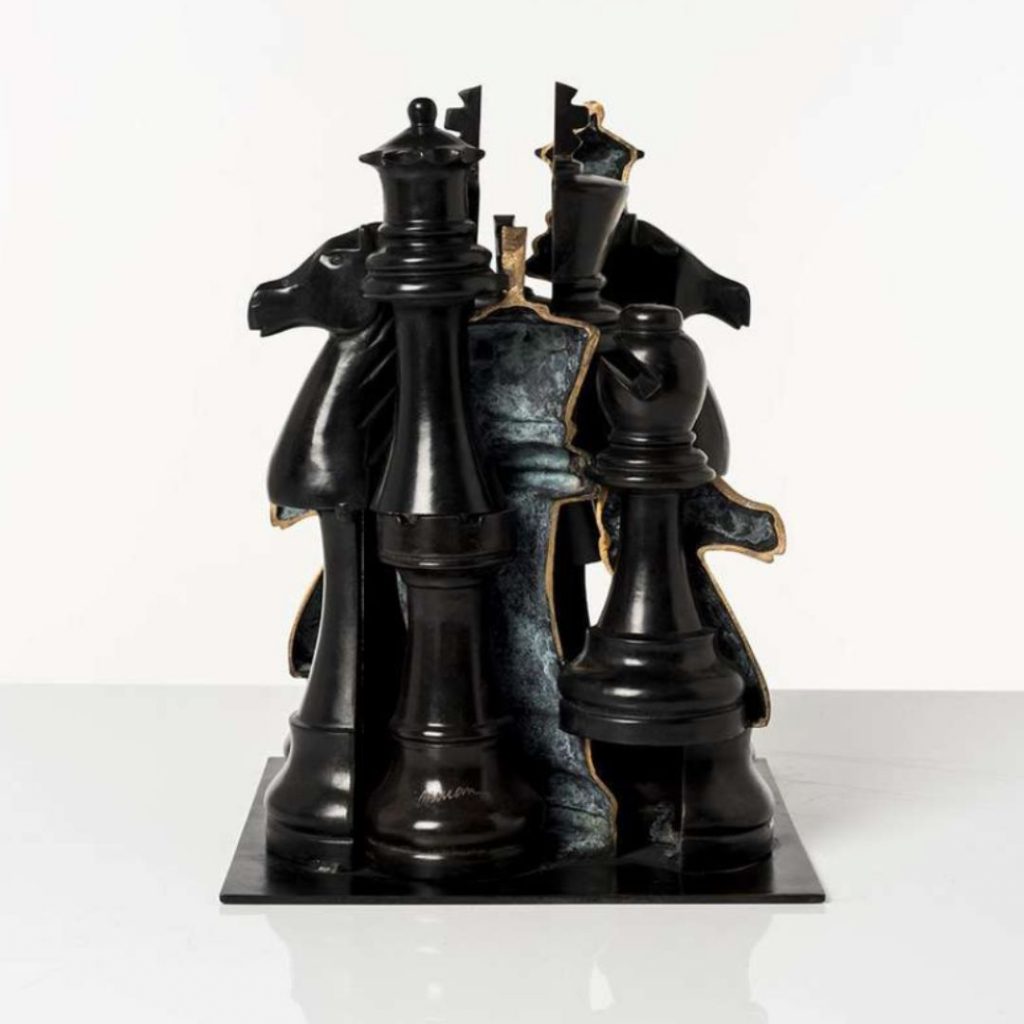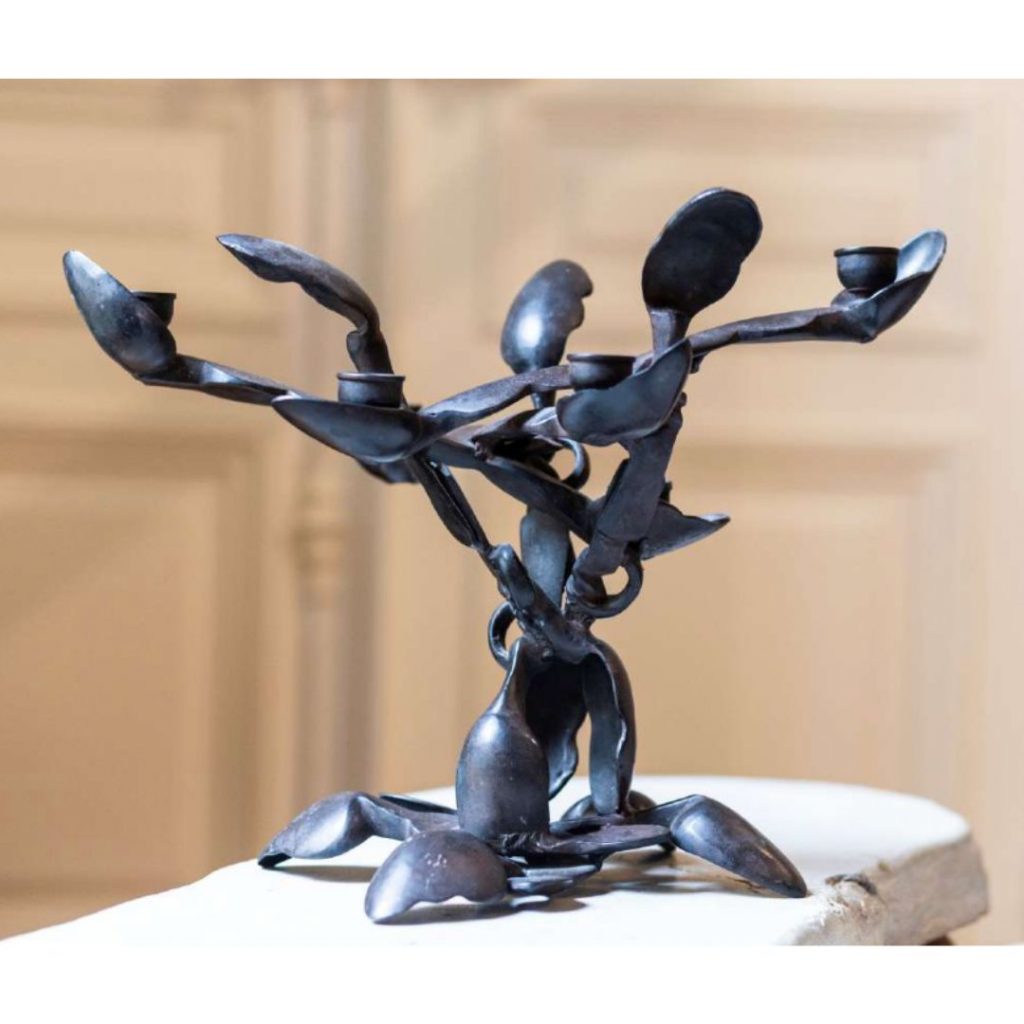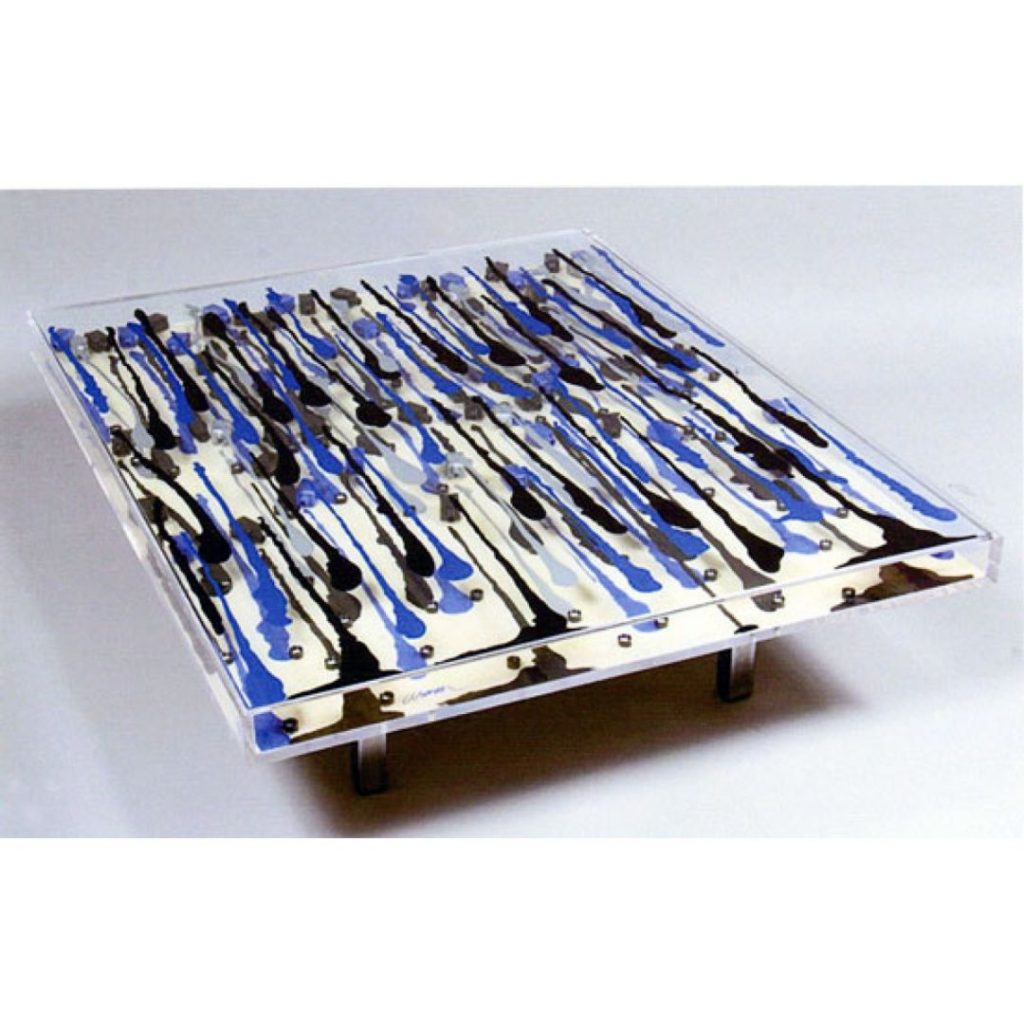Contact us for more information
Arman, or Armand Pierre Fernandez, was born in Nice in 1928. As a child, he became familiar with objects in his father’s antique shop and began painting at the age of 10. In 1946, he enrolled at the Ecole des Arts Décoratifs in Nice, where he met Yves Klein and Claude Pascal, who became close friends. In 1951, his painting became more radical under the influence of the painters Nicolas de Staël and Serge Poliakoff.
In 1958 Armand became Arman without a D. From 1959, the artist began to work with accumulations of objects, in which numerous versions of an object are grouped together in display cases. Arman used a variety of objects, including combs, dolls, clockwork, dollars and lamps. In this way, he renounced composition, denouncing our everyday consumerism. One of his most famous accumulations is “Les Poubelles”, in which waste is cast into blocks of Plexiglas. The addition gives the object its expressive, narrative character.
His accumulation of objects is as much a part of his work as their destruction. He himself destroys series of objects by crushing, sawing, cutting and burning them. The aim is to give the object back its expressive character, which has been lost in mass production.
In 1960, together with a group of artists including Yves Klein, Jean Tinguely, César and Niki de Saint Phalle, he founded the “Nouveau Réalisme” movement. In the 1970s, his reputation grew and the artist gained recognition in France and abroad. In 1980-1990, he exhibited monumental works in France and in the United States, his adopted country. At the end of 1990, his work became more radical, with a succession of gestures linked to the object: he slapped the canvas with objects dipped in ink to imprint their traces.








